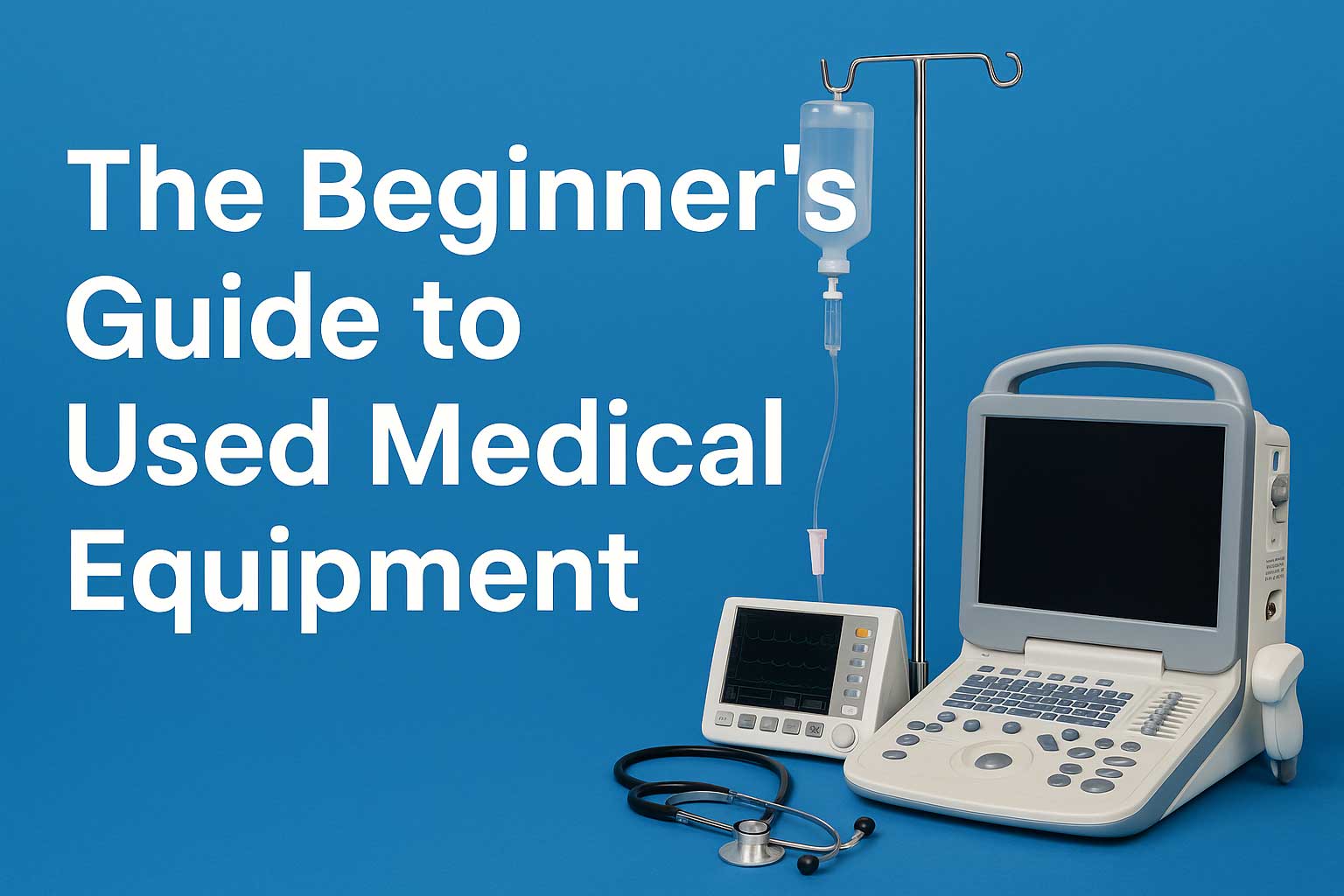The Beginner’s Guide to Used Medical Equipment

Why Consider Used Medical Equipment?
Medical equipment can be a significant investment for clinics, hospitals, and private practices. Buying used or refurbished medical equipment offers a cost-effective solution without compromising on quality — if done correctly. This guide will walk you through the basics to help you make informed decisions.
Benefits of Buying Used Medical Equipment
- Cost Savings: Save up to 50-70% compared to buying new equipment.
- Quick Availability: Skip manufacturer lead times by sourcing ready-to-ship equipment.
- Sustainable Choice: Extends product life cycles and reduces environmental impact.
- Proven Reliability: Many devices come from reputable facilities and have documented service histories.
Common Types of Used Medical Equipment
Used medical equipment spans across several categories. Here are the most commonly purchased types:
- Diagnostic Equipment: Ultrasound machines, ECGs, and imaging systems.
- Surgical Tools: Operating tables, electrosurgical units, and scopes.
- Monitoring Devices: Patient monitors, pulse oximeters, and vital sign monitors.
- Rehabilitation Equipment: Mobility aids, therapy devices, and hospital beds.
What to Check Before Buying Used Medical Equipment
Before purchasing, consider the following checklist to ensure safety, compliance, and performance:
- Check for certifications (e.g., FDA, CE, ISO).
- Verify refurbishment processes used (certified technician involvement is a plus).
- Ask for a service history report.
- Inspect warranty and after-sales support options.
- Ensure compatibility with existing systems and accessories.
Used vs. Refurbished: What’s the Difference?
Not all used equipment is refurbished, and understanding the difference is crucial:
- Used: Sold “as-is,” typically tested but not restored to like-new condition.
- Refurbished: Professionally restored, recalibrated, cleaned, and tested to meet original specifications. Often comes with warranties.
Where to Buy Quality Used Medical Equipment
Reliable sourcing is key. Here are some options:
- Reputable Distributors: Companies like One Medical Equipment offer professionally inspected and certified devices.
- Hospital Liquidation Auctions: Cost-effective but requires technical know-how.
- Online Marketplaces: Use platforms like DotMed, eBay, or MedWOW — but ensure seller verification.
Tips for First-Time Buyers
New to the used medical equipment market? Follow these tips:
- Research the product thoroughly — know what models and features you need.
- Request demo videos or photos of the actual device.
- Work with suppliers who offer warranties and return policies.
- Plan for maintenance — find a technician familiar with the brand/model.
Regulations and Compliance
In many countries, medical equipment — used or new — must comply with national safety and performance standards. Ensure the equipment:
- Meets your country’s medical device regulations (e.g., BPOM in Indonesia, FDA in the U.S.).
- Has been properly decontaminated and labeled.
- Includes user manuals and compliance certificates if required.
Conclusion
Used medical equipment can be a smart, budget-friendly choice when purchased wisely. With the right approach, facilities can gain access to high-quality, reliable tools at a fraction of the cost of new ones. Always prioritize quality, transparency, and seller reputation — and when in doubt, consult a trusted equipment advisor.
Need Help Finding the Right Equipment?
At One Medical Equipment, we specialize in quality-assured used and refurbished medical devices. Contact us today for a quote or to speak with a specialist about your needs.
Next article: Pre-Owned Medical Devices: Are They Safe?
